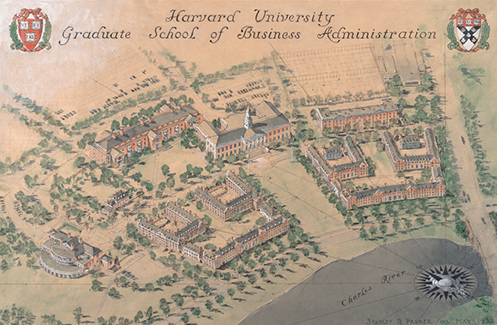Edwin Land identified the intersection of science and art as the cornerstone of his research-based industrial enterprise, which began with his individual efforts, followed by the formation, consolidation, and growth of the Polaroid Corporation. The company, which continued to produce a unique product offered by no other competitor, reached, at its height, annual net sales of more than $2 billion.88 Concurrently another intersection—facilitated by cooperative endeavors among academia, industry, and government—laid the foundation upon which entrepreneurship and innovation thrived in Eastern Massachusetts. Colleges and universities provided a wealth of resources through their research facilities, libraries, and graduates. Support for research and development from the federal government during World War II and the emergence of venture capital firms after the war also fueled the growth of high-tech startups. The greater Boston area flourished into a hub of innovation; many firms would expand out to Route 128, which became known as "America's Technology Highway."
The dedication of the Harvard Business School (HBS) campus on June 4, 1927 marked the formal recognition of HBS as a major research institution, partner with American enterprise, and participant in the greater Boston business community. A leading example of innovation and entrepreneurship, Polaroid naturally drew the interest of the School, whose faculty engaged with the company in research projects, as the subject of case studies, and through consulting.
In 1944, J. Keith Butters, HBS Assistant Professor of Financial Research, and John V. Lintner, at the time a junior member of The Society of Fellows, Harvard University, embarked on a research project analyzing the future impact of "high Federal taxes on the formation and growth of new enterprises in the postwar period."89 Butters and Lintner's series of studies, which included the Polaroid Corporation, culminated in 1945 with the publication of the Effect of Federal Taxes on Growing Enterprises. Study No. 2 focused on Polaroid as representative of the post-war financial issues facing new, expanding firms without large capital resources. Both graduates of Harvard's economics department, John Lintner went on to renown as an economist and financial analyst, and J. Keith Butters was recognized as a leading authority on finance and taxation.
HBS Professor John G. McLean collaborated with Professor of Business Administration George Albert Smith, Jr. on a consulting project for Polaroid from 1945 to 1946. In their comprehensive reports to Polaroid, McLean and Smith advised the company on the potential, design specifications, and monetary value of Edwin Land's new instant photography system that would be commercially released in 1948. Their recommendations included developing a marketing strategy for the invention and outlining what position Polaroid should take in negotiations with the Eastman Kodak Company.90
In 1946, HBS introduced an integrated, first-year program called "The Elements of Administration" to develop general knowledge and skills of business administration irrespective of any field of industry specialization. Building on his research work with Polaroid, Professor Butters developed a Polaroid case for the Finance course as part of this new program. Another case on Polaroid, written by Professor Milton P. Brown and incorporated into the Marketing course in 1955, focused on issues in price setting for a new product.91
Ron Fierstein notes in A Triumph of Genius: Edwin Land, Polaroid, and the Kodak Patent War that "the formula for accomplishment [Land] practiced throughout his life—creative wonderment and intellectual curiosity followed by inexhaustible effort—remains a model that should inform and inspire us all, no matter the particular field of our endeavor."92 The Polaroid Corporation as a developing enterprise represented a natural research subject for HBS. The expansion of Polaroid during the war years, followed by the difficult transition to the post-war economy and then its rapid growth in response to the introduction of the Land Camera in 1948, provided HBS faculty an ongoing wealth of topics to study and analyze.
- 87. George E. Bates, "Polaroid Corporation," HBS No. 246-006 (Boston: 1948), 2.
- 88. "10 Year Financial Summary," Polaroid Corporation Annual Report 2000, 44-45. Polaroid announced the discontinuation of Polaroid film in 2008.
- 89. J. Keith Butters and John V. Lintner, Effect of Federal Taxes on Growing Enterprises (Boston: Division of Research, Graduate School of Business Administration, Harvard University, 1944), iii.
- 90. George Albert Smith, Jr., and John G. McLean, "Memorandum to the Polaroid Company," October 9, 1945, John G. McLean Papers, 1920-1957, Box 1, Folder 1, Baker Library, Harvard Business School.
- 91. George E. Bates, "Polaroid Corporation," HBS No. 246-006 (Boston: 1948); Milton P. Brown, "Polaroid Corporation: Price a New Product," HBS No. 555-001 (Boston: 1955).
- 92. Ronald K. Fierstein, A Triumph of Genius: Edwin Land, Polaroid, and the Kodak Patent War (Chicago: American Bar Association, 2015), 532.









